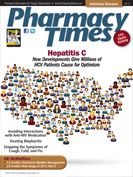Publication
Article
Pharmacy Times
Avoiding Wrong-Patient Errors at the Point of Sale
Author(s):
Some important safety measures, such as asking open-ended questions, are neither complicated nor costly.
Some important safety measures, such as asking open-ended questions, are neither complicated nor costly.
Last year the national and local Denver news media reported a tragic story about a woman, 6 weeks pregnant, who received the high-alert medication methotrexate instead of the prescribed antibiotic from her community pharmacy. According to reports, she took 1 dose of methotrexate before she discovered the error and was sent to an emergency department by her physician. The final outcome of the error to the patient and the fetus is not known.
One of the factors contributing to the error was the similarity of patient names. The methotrexate was intended for a woman with the same last name and a similar first name. The patient told the news media that the pharmacist did not ask for her address or date of birth to confirm her identity at the point of sale, a process which was part of the pharmacy’s standard procedure.
When errors like this occur, educational efforts should be widespread and include all pharmacy staff involved in the process, rather than be remedial and directed only at the personnel involved in the error. High-leverage safeguards should be incorporated whenever possible. Standardized systems and processes are essential to ensure that everyone follows an established process. Consider the following strategies to help standardize processes and reduce the risk of wrong-patient errors at the point of sale.
Use a second patient identifier. Ask for the patient’s address or date of birth in addition to the patient’s name. Compare their answer with the information on the prescription receipt. Never ask a “yes” or “no” question by reading aloud the patient’s address or date of birth. The Institute for Safe Medication Practices has received numerous reports of cases where patients responded “yes” and confirmed that the information presented was correct, only to take home someone else’s medication.
Open the bag. The opportunity for a final accuracy check is lost when a prescription is handed over without the bag being opened before the patient leaves the pharmacy. Have the patient look at the prescription vials and the medications they contain to verify what was ordered and expected. This may not be appropriate when a friend or neighbor is picking up the prescription. In these cases, patients should be told to open the package at home, check the contents before taking any of the medication, and call the pharmacist with any concerns or questions.
Employ technology. Consider encoding the bar code on the prescription receipt with the patient’s date of birth—when scanned, have a blind prompt that requires the pharmacy staff member to ask the customer for the birth date, then keypunch it into the register. If the date of birth does not match the patient’s profile or is not entered, the transaction cannot be completed.
Flag patients with similar names. Include electronic notes in computer systems to warn about patients with similar names. Alerts should appear when these patients are selected during prescription data entry. These flags should also be visible at the point of sale.
Educate patients. Pharmacists should always engage patients in dialogue by asking questions that do not have “yes” or “no” answers. Patient education sessions should include a discussion of the medication’s purpose to help ensure that the correct medication is being dispensed to the correct patient. Teach patients how to actively participate in patient and medication identification processes at pick up. As mentioned before, this may not be possible if someone other than the patient is obtaining the medication(s), so important information must be conveyed to the patient via telephone.
Quality processes. Pharmacy managers and/or regional personnel for chain pharmacies should periodically perform quality control checks by observing the processes at the point of sale to ensure adherence to the standardized work practices. PT
Dr. Gaunt is a medication safety analyst and the editor of ISMP Medication Safety Alert! Community/ Ambulatory Care Edition.







